One of the first things I do with a new client is to evaluate their standing posture. They may feel like they are standing straight, but injuries and life habits force us into adapting postures that may not be ideal.
As one client noticed, optimal standing posture can feel awkward at first:
Dustienne evaluated my balance and posture as part of her initial examination. I stood upright thinking I had pretty good posture. Apparently, I had become accustomed to postural accommodations. My normal posture morphed into something quite different than it should have been while recovering from an injury. Dustienne gave me cues to get my rib cage over my pelvis. It was incredible because the “normal” upright position felt so awkward and unsustainable. Honestly, it felt like I was leaning way forward over my toes like a skier taking off on a ski jump. It took a while of doing my home program and working with Dustienne, but I can now achieve normal upright posture and it feels great!
Your proprioceptors, which are sensory receptors, are responsible for telling your brain where your body is in space. When postural adaptations occur after an injury or pregnancy, your brain needs to retrain and relearn what neutral standing is.
The body’s plumb line
In construction, there is a way to determine whether a line is perfectly vertical by using a pointed weight called a plumb. This vertical line is called a plumb line.
The body also has a plumb line.
Florence Kendall was a pioneer in the field of physical therapy. Her most popular and highly regarded book, Muscles: Testing and Function, is a cornerstone of physical therapy testing and evaluation. In this book, Kendall discusses how optimal posture can be measured on a plumb line.
Ideally, the plumb line would intersect the middle of the ankle, knee, hip joint, rib cage, shoulders, and ears. We see deviations from the plumb line alignment due to weakness, myofascial tightness, and adapted postural habits. This might present as the head forward past the plumb line, the ribs behind, etc.
For instance, for my client above, her ribs were behind her pelvis so far that she needed to lock out her gluts to balance, which decreases the function of the abdominal muscles and can lead to pelvic and back pain. Her head needed to come forward past the plumb line to accommodate for the ribs coming forward (hence why she felt like she was falling forward at first).
Two common postural habits that I see in the clinic are a postpartum postural adaptation and chronic pelvic pain postural adaptation.
Postpartum postural adaptation
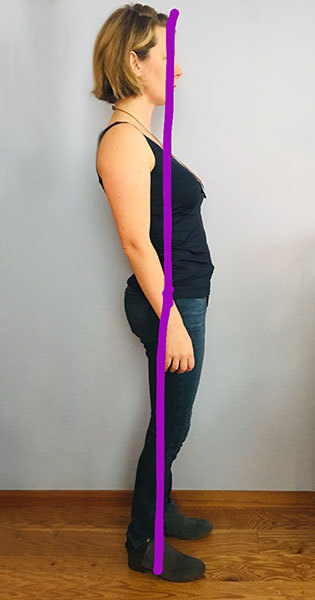 When you are pregnant, you spend somewhere in the ballpark of nine months getting used to learning where your new center of gravity is as the baby grows and gains mass. The learning process is gradual over roughly 40 weeks and your proprioceptive system adapts over time.
When you are pregnant, you spend somewhere in the ballpark of nine months getting used to learning where your new center of gravity is as the baby grows and gains mass. The learning process is gradual over roughly 40 weeks and your proprioceptive system adapts over time.
You experience a completely different center of gravity moments after you have your baby, but your proprioceptors haven’t had a chance to figure out where your body is in space.
If we look at a woman who is postpartum on a plumb line, we will likely see:
- her pelvis forward of the line
- ribs behind the line
- head either in line or forward of the line
As a result:
- The front of the hip joint is in an overly lengthened position, making the gluts functionally weak and putting excess pressure in the hip joint capsule.
- The abdominal wall is overly lengthened, which will make the abdominals less efficient.
- The back aspect of the pelvic floor muscles grips around the anus, which could mean less activation in the front where some women have weakness and associated urinary incontinence.
Chronic pelvic pain
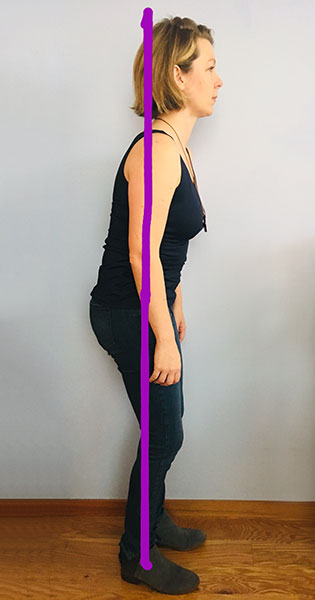 If you experience pelvic pain, like endometriosis or interstitial cystitis, you may be not be able to stand up straight at times due to the severity of the pain you experience.
If you experience pelvic pain, like endometriosis or interstitial cystitis, you may be not be able to stand up straight at times due to the severity of the pain you experience.
The pain combined with myofascial adaptations might cause you do adopt a posture where your rear end is tucked under and your ribs are collapsed down in the front. You may find yourself stuck in lumbar flexion, unable to achieve a neutral spine.
Lumbar flexion shortens the abdominal wall and prevents full diaphragmatic excursion.
How do you change this? Sometimes you need to ride the storm out and wait for the bladder, menstrual, or abdominal pain to cease.
Once you are feeling like you are able to be upright again, try my extension progression flow for extending your back again. Be sure to only try for the amount of extension that feels good, without forcing it.
When we are able to keep our shoulder blades back on the ribs, it doesn’t pull our shoulders and our head forward. This helps decrease the amount of weight the spine is supporting in the front. It helps to strengthen around the shoulder blades and the back muscles.
In order to achieve this we need both awareness and the strength to pull our shoulder blades back.
It’s also important to know that we are not supposed to maintain a stiff rigid upright shoulders back posture like we may have been told when we were little kiddos.
How to improve your standing posture
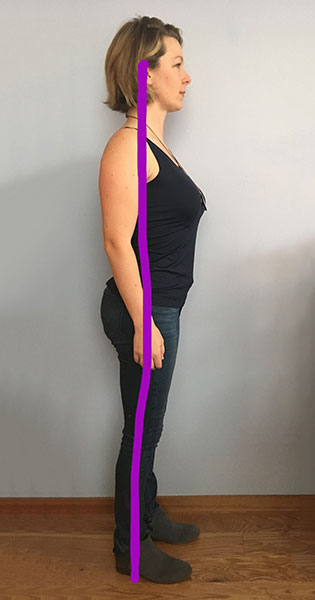 Imagine that you are a kitten being lifted by the back of your neck. Get as much length as you can between the bottom of you skull and the top of your neck at your hairline.
Imagine that you are a kitten being lifted by the back of your neck. Get as much length as you can between the bottom of you skull and the top of your neck at your hairline.
My former voice teacher used to coach me on thinking of keeping the back of the neck alive. So often in our day to day life we are leaning forward. We are talking forward and don’t often think about maintaining a presence at the sides and behind ourselves.
This may sound silly and ethereal, but imagine your jaw has a hinge in the front but also in the back. Try and keep the “back jaw space” buoyant and open.
As you create space at the hairline, draw your head back so that it is over your shoulders. Your soft tissue may be restricted and not allowing you to get all the way back. This is okay and it will take some time.
You can retrain your neck muscles by doing pillow presses (laying on your back with your head supported, pressing straight into the pillow and holding for 5 seconds) and prone head lifts (laying on your stomach, tucking your chin and keeping your chin tucked as you lift your forehead a little off of the ground).
What you want to watch out for when you practice standing tall is not lifting the chin. Sometimes when people are correcting a forward head posture they end up bringing the top of their head back and lifting their chin. This also means the eyes are above the horizon line, so they will sink forward into the throat, which is not optimal for voice production.
Postural strength
It’s nearly impossible to maintain and upright standing posture without addressing shoulder stability. It’s a chain reaction: if your shoulder blades and shoulder joints round forward, that will pull your head forward.
Our shoulder blade area is often over-lengthened and weak for a variety of reasons:
- using a computer
- nursing a baby
- playing an instrument
- texting
Chest mobility
We need the mobility in the front of the chest wall and the strength at the shoulder blade area to maintain the ideal shoulder blade position.
One easy way to lengthen your chest muscles is to lay on a foam roller and allow your arms to open to the side or overhead.
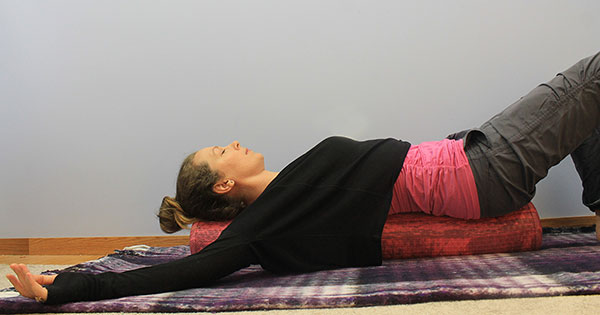
Theraband for strength
Use a theraband resistance of your choice. Keep your lower belly engaged as you open and close your hands.
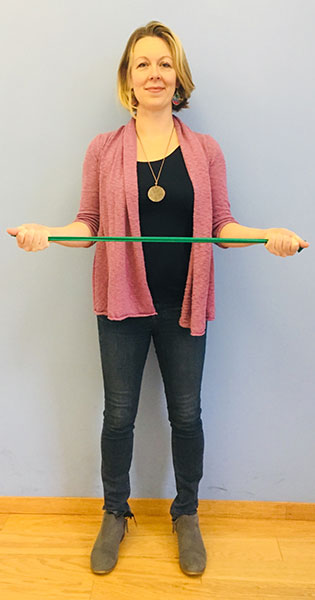
Sahrmann diamond
Standing with your back against the wall, walk your feet out so that you are able to rest your pelvis, ribs and head against the wall.
Bring your arms into a goal post position. Try and keep your wrists and back of your hands along the wall as you slide your hands up the wall, creating a diamond shape.
Let’s add the breath. As you bring your arms overhead inhale into the sides of the ribs. Exhale back to goal post position.
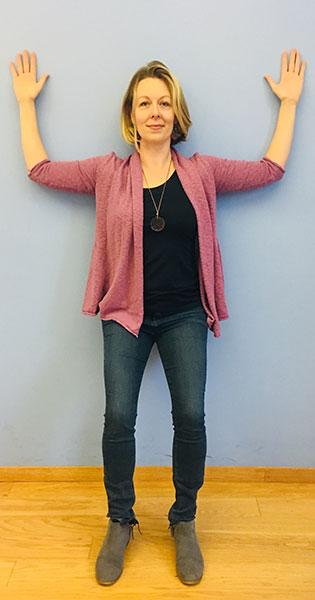
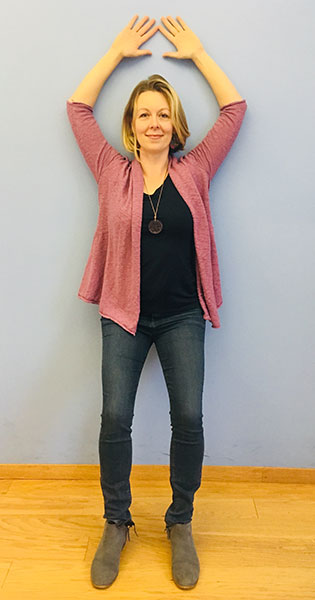
Strengthening your back extensors
In addition to shoulder and scapular strength, it’s important to have strong back extensors. One really great exercise for back strength is alternate arm leg extension.
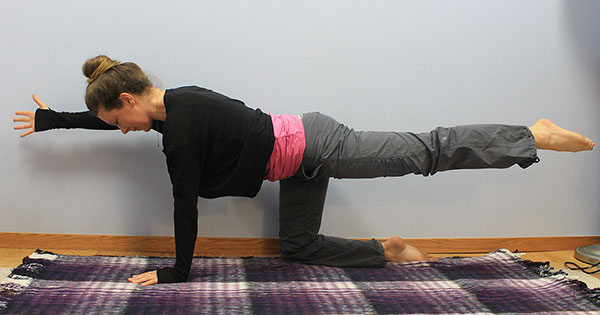
Build strength in your back with the arm/leg alternate extension. From table pose, extend your right arm and left leg at the same time. Then switch and extend your left arm while extending your right leg.
Habits were formed once and they can be changed! Let me know what you think about these ideas for postural adjustments in the comments below!
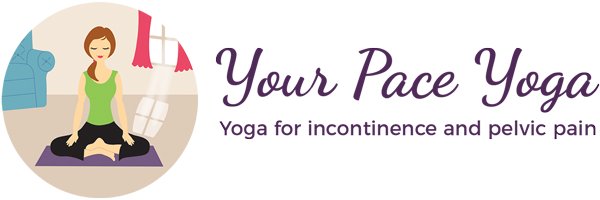
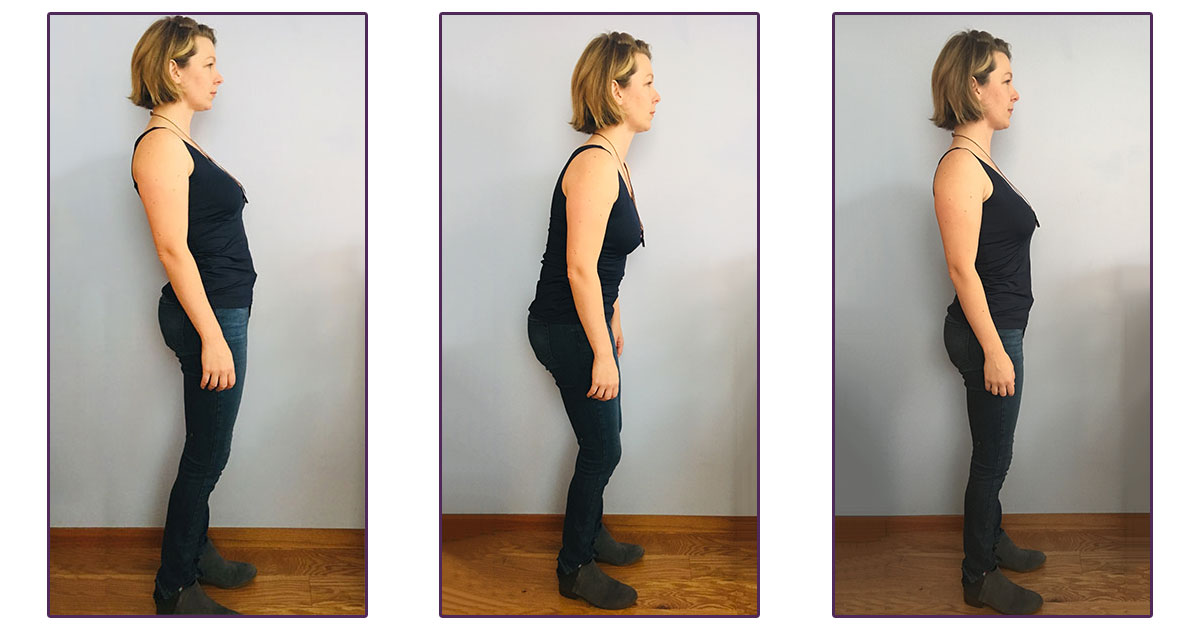
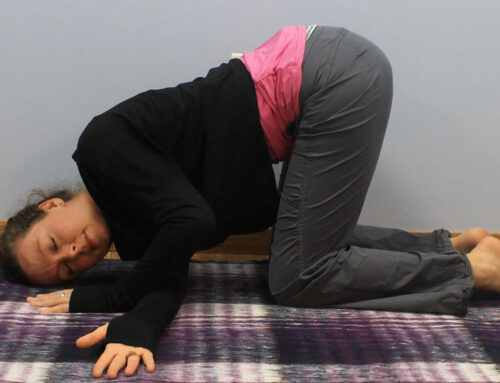
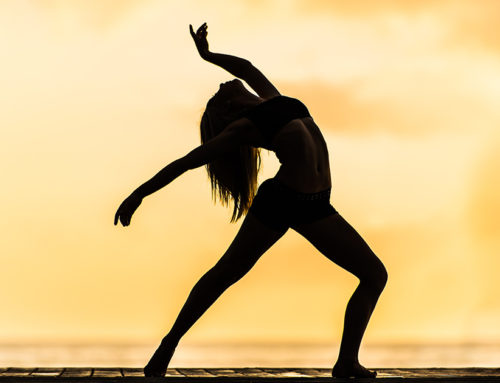
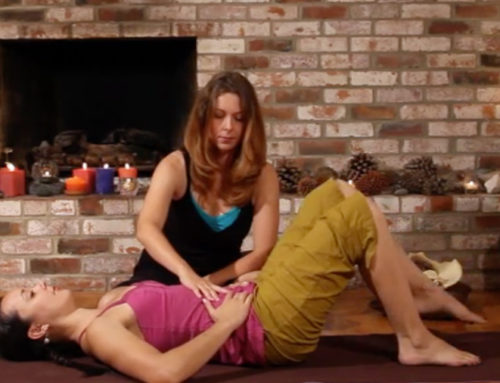
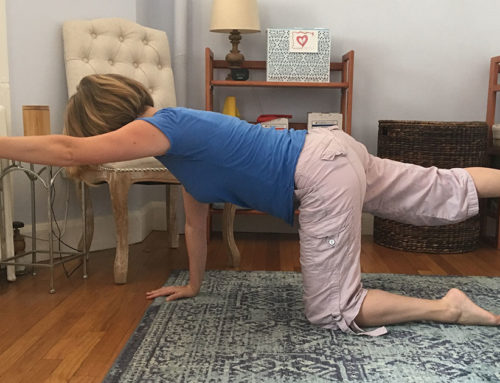

[…] Stack your pelvis on top of your feet and rib cage on top of your pelvis. Read more about optimal standing posture. […]
[…] If you trade slumped sitting for slumped standing, is standing actually any better? Read more about how standing posture affects your back and pelvic health. […]
[…] more tips on finding your optimal standing posture and seated […]